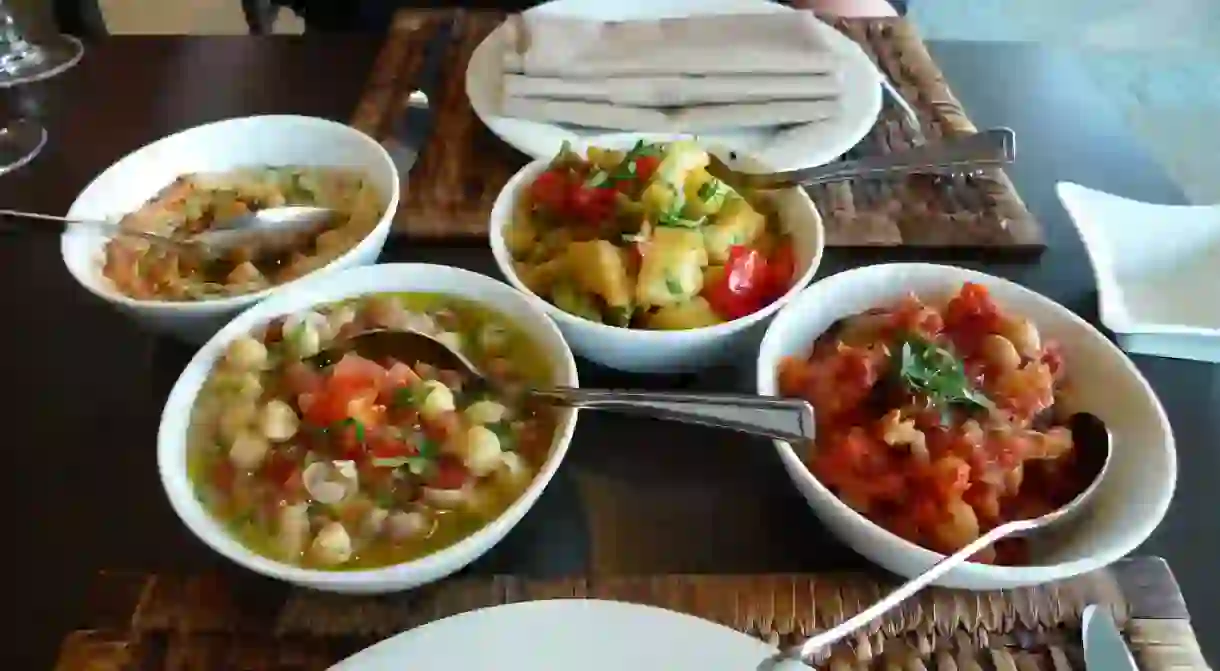7 Lebanese Dishes Foreigners Usually Don't Hear About

Lebanon is known for its diverse and rich cuisine. Many flock to the country just for the food and good time that goes along with it. But what comes to mind first when you read ‘Lebanese Food’? If it’s tabbouleh, kebabs or arak, I wouldn’t blame you – they are distinctly Lebanese dishes. The cuisine, however, is not an everyday barbecue; here are seven dishes that foreigners usually don’t hear about.
Kousa bi banadoura
Kousa bi banadoura (stuffed tomato zucchini) is zucchini stuffed with rice and minced meat. The zucchini is then cooked in tomato soup which is seasoned with onions, garlic and dried mint. Occasionally aubergines with the same stuffing are cooked alongside the zucchini. Another variation of the dish is zucchini cooked in Arabic yoghurt.

Shish barak
This regional food, presumably introduced though Ottoman influence, is made of little meat dumplings cooked in unsweetened yoghurt and seasoned with onion, garlic and coriander. When served, the shish barak ‘soup’ is poured over a mixture of rice and lentils.

Warak enab
Warak enab (grapevine leaves) is one of Lebanon’s most prized dishes. It is served on religious holidays such as Eid or Easter, but it can also a regular menu item for some households. It is not made often simply because of the effort it takes to make. The grapevine leaves must be the perfect size, caefully stuffed with the right amount of rice and meat and then rolled just right and set to cook over night. The little rolls are boiled in a mixture of lemon atop a layer of meat and bones. This recipe is definitely not made for everyday consumption.

Kibbeh
Served raw, grilled, fried or stewed, nothing is more Lebanese then kibbeh. The base of the dish is a mixture of meat, goat, onion and basil. When served raw, the main ingredients are spread out on a plate and eaten with pita bread. When grilled or fried, the kebbeh base is shaped into dome dumplings and stuffed with more meat and occasionally chilli. When stewed, the mixture is spread over a layer of minced meat and onion then cooked in an oven, almost like a Lebanese version of meatloaf.

Batata bi kezbara
Batata bi kezbara is a small appetizer made of diced fried potato seasoned with coriander and sometimes chilli. For some locals, the dish is so savoury, they will eat a plate for lunch. It is usually eaten with pita bread or a fork.

Lahm bi ajeen
Perhaps one of the defining pastries in Lebanon, specifically in Tripoli, is lahm bi ajeen (meat in dough). What distinguishes it in from the more known safiha is the way the meat is prepared: it is cooked first with onion and mint then with tahini, parsley and pomegranate molasses; after, it’s spread out across squares of special dough and grilled. The dish is usually served as an appetizer but can be eaten it its own on some occasions.

Fried everything
The Lebanese have a tendency to fry everything. From vegetables to meat and chicken, anything can be deep-fried. The most common dishes are fried cauliflower and aubergine: many households have a spread for lunch consisting of fried cauliflower, aubergine and potato, all eaten with pita bread. The same dishes can be served as appetizers during a feast as well.














